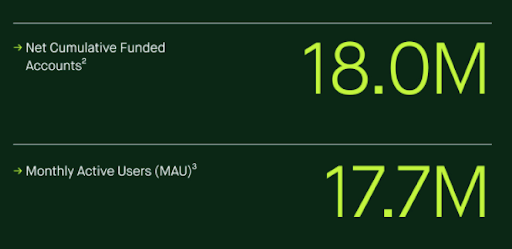A look at the three basic design values of any digital workplace tool, according to the creators of Google Workspace.

The more intuitive and flexible the technology, the better it is for adapting to a new environment.
getty
With the growing importance of digital workplaces, enterprises and institutions everywhere are making decisions about communications tools that will affect their organizations for years.
COVID-19 hasn’t just changed the rate and scale at which we’re going digital. It’s changing how we create and share information, and how we relate to other individuals and teams. These are lasting changes—our digital, virtual contexts are almost certain to remain in some form even after “work from home” evolves into “return to office.” Compounding the issue, no one can fully say what those changes will be, any more than they can say when the global pandemic will end.
That is why examining the basic design values of any digital workplace tool is so important. Choices about which email, chat, video, and online collaboration service to use are both highly personal and affect how an organization works, possibly for decades. The more intuitive and flexible the technology, the better it is for adapting to a new environment.
People rightly start by looking at the tools themselves. Do they exist in ways that are appropriate to online life? Or are they older tools from a world of files, versions, and vendor lock-in that have been repurposed for online work? Digging deeper, what were the experiences and values that informed the original engineering choices of these digital tools’ creators? What did they learn in their own foundational periods, when their fateful choices informed how their collaboration tools worked?
Those questions of engineering choices are harder for most people to come by. To address them, I recently spoke with some creators of what has become Google Workspace (previously known as G Suite). Flexibility, customer choice, and ease of use were, of course, all elements of their work. In every case, though, there was an even more profound learning about good digital design: The most basic things in life—time, place, and other people—are the most important. If you respect these basics, great things happen.
Below, we take a look at the three principles the creators of Google Workspace say are the basic design values of any digital workplace tool.
1. Make it easy to collaborate—don’t just add features
Table of Contents
Google Docs began life more than 15 years ago, with a mission to develop a document creation, collaboration, and sharing tool for the growing online world. It was an underdog against what were then the standard software applications for word processing (as it was called).
“The thesis was that convenience and collaboration would win out over a ton of features continually added to an old system,” said Sam Schillace, one of the early founders and leaders of the project. “JavaScript in the browser let us make it incredibly simple to share and work together anywhere. ‘Convenience and simplicity’ turned out to be a good basic thesis.”
One great insight from early customers is how important that convenience is. As Schillace noted, “People are busy. They don’t have time to get in the weeds with a tool that’s supposed to help them be more productive and efficient. To that end, we made Google Docs really simple to work together, and really reliable (which is also something to not have to think about). And that change was enough to move folks to the new model.”
2. Ensure presentations are accessible from anywhere
Presentations are clearly one of the social aspects of work, but not in ways that are immediately obvious. Besides being a part of meetings, they frequently require multiple authors and sources of input, and lots of tinkering in their creation. Chris Nokleberg, one of the first people involved in the development of Google Slides, says that’s why being able to stay connected from any device was so important.
“Almost from the start, we learned from users that accessibility from anywhere was our most compelling feature,” he said. “Slides are very information-dense things, with lots of images, charts, and diagrams—getting all of that to run in a browser was magical. We really started to see the potential when we saw that a dozen people could look at something in common from whatever device they were using.”
3. Let human experience guide product development
It’s well known that Google’s global scale, and our ambition to organize an unprecedented amount of information, compelled us to invent a number of technologies that have become fundamental to cloud computing and the modern internet. Less well known is that from early in our history we were avid users of video conferencing. That provided unexpected insights and benefits, which continue to affect the way we develop Google Meet, our video conferencing service in Google Workspace.
“There’s something special about making sure you’re keeping humanity in a digital world.”
Daryll Henrich started at Google in 2005 and was later responsible for building out Google’s video conference fleet, using third-party equipment. “Even then, most meetings were video meetings,” he recalled. “The cost was out of control.” That led to developing an internal solution that was far cheaper, easier to use, and accessible to all.
The real breakthrough for Google, he said, “was realizing that the product wasn’t about the hardware, it was the experience. You’d be in a meeting and, except for a little three-digit code in the corner of their video that said where the room was, there was no way to tell—and no need to tell—where anyone was. We were all just Googlers, working together.”
“I’m convinced that [breakthrough] allowed us to be humans with each other in a deeper way, in an otherwise very data-driven org,” Henrich continued. “It’s how we quickly became a diverse global organization. There’s something special about making sure you’re keeping humanity in a digital world.”
Needless to say, much has changed since our engineers first started building Google Workspace, but these foundational insights have been no less important. When Meet announced noise cancellation, for example, it was in the service of helping people connect more authentically. A new comment interface in Google Docs, Sheets, and Slides builds on the sense of dynamism and collaboration in team-led creation. A new status indicator for online and offline work ensures people can participate the way they need, from wherever they are.
Time. Place. People. If you give these essentials maximum freedom, great things can happen. In choosing technology for the future, it’s important to first consider the foundational thinking behind the product.
See what’s new: Google Cloud recently introduced Google Workspace: everything you need to get anything done, now in one place. Learn more.







